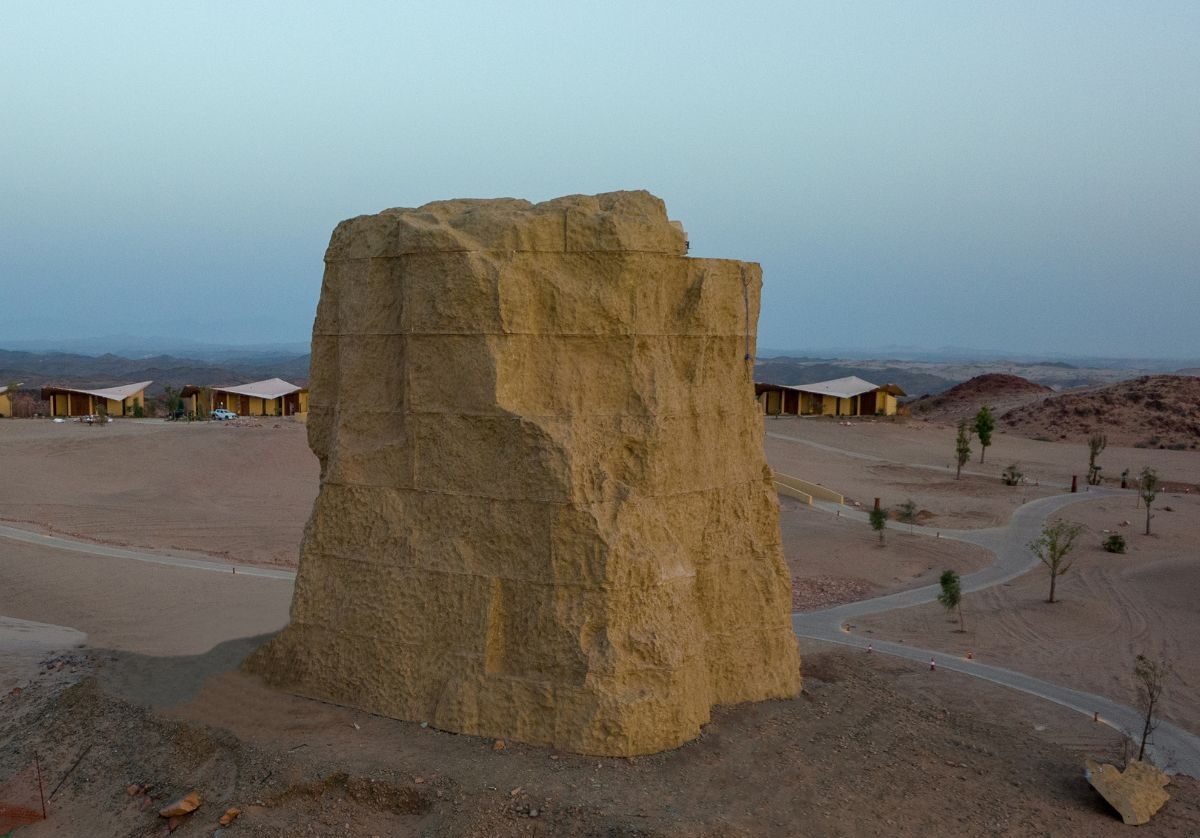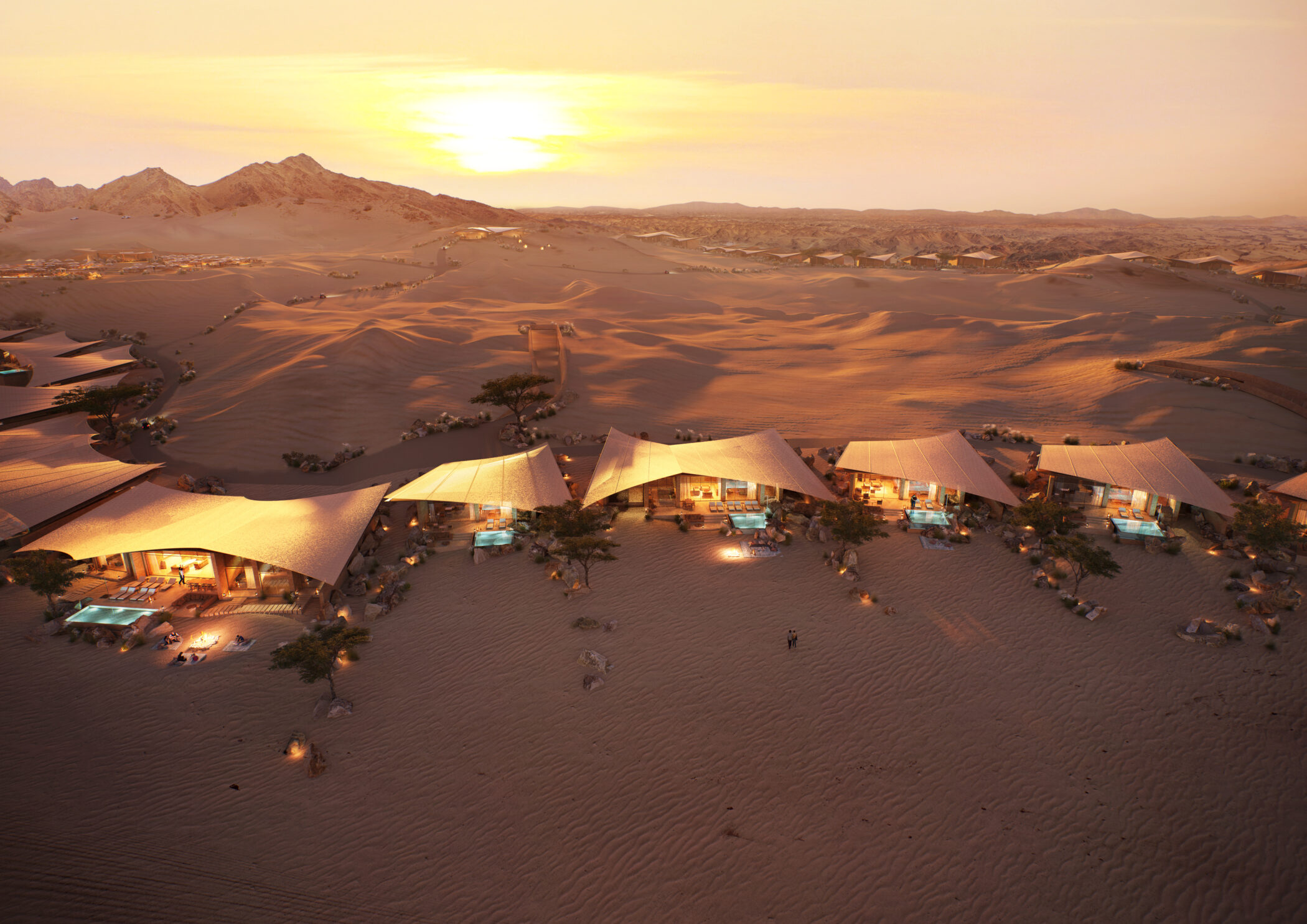Saudi Arabia’s Red Sea Global has installed the world’s first net-zero carbon 5G network powered by solar energy at the Six Senses Southern Dunes resort. Nick Hendry reports
Most people don’t think about the carbon footprint of the internet but Red Sea Global, developer of the Red Sea resort on Saudi Arabia’s west coast, has launched the world’s first zero-carbon 5G network in an off-grid desert location in partnership with Zain KSA.
Zain KSA is the largest telecoms provider in the Kingdom of Saudi Arabia, and has designed the system exclusively for the Red Sea Project. The service is initially available at the new Six Senses Southern Dunes, which opened last month. (The hotel also has free wifi.)
The 5G towers serving the destination will provide a new network that will be shared by other providers, reducing the need for further construction, and have been designed to mitigate their visual impact on their surroundings because they look like large rocks. Each is built using the latest in 3D printing technology. Their size is relatively small, and the exterior of each is intended to replicate natural rock formations found in the area. Developers say this will allow the towers to “seamlessly blend with [the] resort’s natural beauty”.
Each is built using the latest in 3D printing technology. Their size is relatively small, and the exterior of each is intended to replicate natural rock formations found in the area. Developers say this will allow the towers to “seamlessly blend with [the] resort’s natural beauty”.
5G INSIGHTS
Base Stations and Infrastructure: 5G networks require more base stations (small cells) than previous generations like 4G, due to their higher frequency and lower range. These additional base stations increase the overall energy consumption. However, advancements in technology are focused on making these stations more energy-efficient.
Energy Efficiency: Despite the increased number of base stations, 5G technology is generally more energy-efficient on a per-bit basis compared to previous generations. This means that for the amount of data transmitted, 5G can be more efficient.

Data Throughput: 5G networks support much higher data rates. While this can lead to increased energy consumption due to the handling of more data, the efficiency improvements in 5G technology can help offset this.
Source of Energy: The carbon footprint greatly depends on the source of the electrical power used. If the energy comes from renewable sources like wind, solar, or hydro, the carbon footprint is lower. Conversely, if the energy comes from fossil fuels, the carbon footprint is significantly higher.
Group CEO of Red Sea Global, John Pagano, says: “Zain KSA has demonstrated a deep understanding of our requirements and provided us with the services and solutions necessary to achieve our strategic objectives. Together, we are determined to make a meaningful impact that sets new standards in sustainable development”.
This new network is just one aspect of the Red Sea’s push to operate in a sustainable manner. The stated goal for the development – launched as part of Saudi Arabia’s Vision 2030 plan to diversify the national economy – is to be completely powered by renewables by 2030 and achieve a net conservation level of 30 per cent by 2040.
The Red Sea Project covers a total of 28,000 sq km, including an archipelago of 90 islands, and is surrounded by the world’s fourth-largest barrier reef system.
The destination resort is intended to be a market leader in luxury “regenerative” tourism, with a full capacity of 8,000 rooms across 50 resorts planned for 2030. The entire project will be powered by more than 760,000 solar panels installed across the region, meaning the new 5G network is served entirely by renewable energy.
The region is home to dormant volcanoes, untouched beaches, cultural sites and vast desert landscapes – all key to the strategy of attracting luxury tourist traffic to the area. Alongside the Six Senses, the first properties to launch in the area include the St Regis Red Sea Resort and Nujuma, a Ritz-Carlton Reserve.
Both are located in the Ummahat Islands, home to much of the coral reef in the area and already the site of diving and water-sports centres.
This section of the development will be served by Saudi Arabia’s first seaplane company, Fly Red Sea, which will operate between the islands and the newly-opened Red Sea International airport. In line with the sustainability drive, this airport is already 100 per cent renewable-powered and will eventually be equipped to deliver Sustainable Aviation Fuel to all visiting aircraft.
As well as luxury tourism options, by the time of completion the Red Sea will offer more than 1,000 private residences, and amenities for tourists and residents alike which will include golf courses and luxury marinas. All these features will be designed and built to comply with the stated national aim to achieve carbon neutrality by 2060 and to improve quality of life for citizens across the Kingdom.

